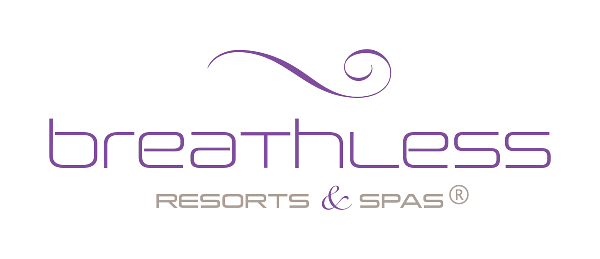Title Page
-
Site conducted
-
Conducted on
-
Prepared by
-
Location
-
Where a site produces products where the production process, or part of it, requires high-risk, high-care and/or ambient high-care production zones (see clause 4.3.1 for this assessment and Appendix 2 for the definition of these production zones), all the relevant requirements from sections 1–7 of the Standard must be fulfilled in addition to the requirements in this section.
-
SOI The site shall be able to demonstrate that production facilities and controls are suitable to prevent pathogen contamination of products.
8.1 Layout, product flow and segregation in high-risk, high-care and ambient high-care zones
8.1.1
-
The map of the site (see clause 4.3.2) shall include the location of the pathogen control step(s).
8.1.2
-
Where high-risk areas are part of the manufacturing site, there shall be physical segregation between these areas and other parts of the site. Segregation shall take into account the flow of product, the nature of the materials (including packaging), the equipment, the personnel, the chemicals, the disposal of waste, the flow of air, the air quality and the provision of utilities (including drains). The location of transfer points shall not compromise the segregation between high-risk areas and other areas of the factory. Practices shall be in place to minimise the risk of product contamination (e.g. the disinfection of materials on entry).
8.1.3
-
Where high-care areas are part of the manufacturing site, there should be physical segregation between these areas and other parts of the site. Segregation shall take into account the flow of product, the nature of materials (including packaging), the equipment, the personnel, the chemicals, the disposal of waste, the flow of air, the air quality and the provision of utilities (including drains).
-
Where physical barriers are not in place, the site shall have undertaken a documented risk assessment of the potential for cross-contamination, and effective, validated processes shall be in place to protect products from contamination, including the procedures for changeover from low-risk to high-care.
8.1.4
-
Where ambient high-care areas are required, a documented risk assessment shall be completed to determine the risk of cross-contamination with pathogens. The risk assessment shall take into account the potential sources of microbiological contamination and include:
-
• the raw materials and products
-
• the flow of raw materials, packaging, products, equipment, personnel and waste
-
• air flow and quality
-
• the provision and location of utilities (including drains).
-
Effective processes shall be in place to protect the final product from microbiological contamination. These processes may include segregation, management of process flow or other controls.
8.2 Building fabric in high-risk and high-care zones
8.2.1
-
Where sites include high-risk or high-care facilities, there shall be a map of the drains for these areas which shows the direction of flow and the location of any equipment fitted to prevent the backup of waste water. The flow from drains shall not present a risk of contamination to the high-risk/care area.
8.2.2
-
High-risk areas shall be supplied with sufficient changes of filtered air. The filter specification used and frequency of air changes shall be documented, based on a risk assessment that takes into account the source of the air and the requirement to maintain a positive air pressure relative to the surrounding areas.
8.2.3
-
Where sites include removable walls as part of the design of the high-risk or high-care area (e.g. to allow occasional movement of large items or specialist maintenance equipment), procedures shall be in place to ensure:
-
• removable walls are tight fitting
-
• their use is managed
-
• movement of the walls is authorised and is completed only by trained and authorised staff
-
• cleaning and reconditioning procedures are in place and completed prior to production.
8.3 Equipment and maintenance in high-risk and high-care zones
8.3.1
-
Maintenance activities undertaken in high-risk and high-care areas shall respect the segregation requirements of the area. Wherever possible, tools and equipment shall be dedicated for use in that area and retained there.
8.3.2
-
Where equipment is removed from the high-risk or high-care area, the site shall have a procedure to ensure the cleanliness and removal of contamination hazards before the equipment is accepted back into the area.
-
Records of acceptance back into the area shall be maintained.
8.3.3
-
Where portable equipment (e.g. handheld devices) and battery-charging equipment is used in high-risk or high-care areas, these items shall either:
-
• be visually distinctive and dedicated for use in that area, or
-
• have specific procedures (e.g. a full clean) to ensure that their use does not result in contamination.
8.4 Staff facilities for high-risk and high-care zones
8.4.1
-
Where an operation includes a high-risk or high-care area, personnel shall enter via a specially designated changing facility at the entrance to the area. The changing facilities shall incorporate the following:
-
• clear instructions for the order of changing into and out of dedicated protective clothes to prevent the contamination of clean clothing
-
• protective clothing that is visually distinct from that worn in other areas and which shall not be worn outside the area
-
• a hand-washing routine during the changing procedure to prevent contamination of the clean clothing (i.e. hand-washing after hair covering and footwear have been put on, but before handling clean protective clothing)
-
• hand-washing and disinfection facilities that shall, as a minimum, be situated:
-
• prior to entry for high-risk areas
-
• on entry for high-care areas
-
• dedicated site footwear that is provided by the site and which shall not be worn outside the factory
-
• an effective control of footwear to prevent the introduction of pathogens into the area. Control may be by segregation and a controlled change of footwear before entering the area (such as a barrier or bench system), or by the use of controlled and managed boot-wash facilities where these demonstrably provide an effective control of footwear to prevent the introduction of pathogens into the area.
-
A programme of environmental monitoring shall be used to assess the effectiveness of footwear controls.
8.5 Housekeeping and hygiene in high-risk and high-care zones
8.5.1
-
Environmental cleaning procedures in high-care/high-risk areas shall consider the different microbiological risks associated with each production risk zone.
-
At a minimum, cleaning procedures in high-risk and high-care areas shall include all of the requirements in clause 4.11.2. The frequency and methods of cleaning shall be based on risk, and the procedures shall be implemented to ensure that appropriate standards of cleaning are achieved.
8.5.2
-
Microbiological limits for acceptable and unacceptable cleaning performance shall be defined for high-risk/high-care production risk zones.
-
These limits shall be based on the potential hazards relevant to the product or processing area. Therefore, acceptable levels of cleaning shall be defined, for example, by visual appearance, ATP bioluminescence techniques (see glossary), microbiological testing or chemical testing as appropriate. The site shall define the corrective action to be taken when monitored results are outside of the acceptable limits.
-
Where cleaning and disinfection procedures are part of a defined prerequisite plan to control the risk of a specific hazard, the procedures and frequencies shall be validated and records maintained. This shall include the risk from cleaning chemical residues on food contact surfaces.
8.5.3
-
Equipment used for cleaning in high-care and high-risk areas shall be:
-
• visually distinctive and dedicated for use in that area
-
• hygienically designed and fit for purpose
-
• cleaned and stored in a hygienic manner to prevent contamination (for example, storing equipment in designated locations, off the floor, when not in use).
8.5.4
-
Where the site uses CIP equipment, either this shall be for a specific area only (i.e. separate equipment for high-risk, high-care and other production areas) or the CIP system shall be designed and controlled so that it does not present a risk of contamination to the high-risk/high-care area (i.e. controlling direction of flow from high-risk/high-care to low-risk areas, preventing the recycling or re-use of rinse solutions from one area to another).
8.6 Waste and waste disposal in high-risk, high-care zones
8.6.1
-
Waste disposal systems shall ensure that the risk of contamination of products is minimised through the control of potential cross-contamination.
-
Risk assessment shall consider the movement and flow of waste and waste containers. For example, waste bins should be dedicated to either high-risk or high-care areas and not be moved between different production risk zones.
8.7 Protective clothing in high-risk and high-care zones
8.7.1
-
Laundering of protective clothing for high-risk and high-care areas shall be done by an approved contracted or in-house laundry using defined criteria to validate the effectiveness of the laundering process. The laundry must operate procedures which ensure:
-
• adequate segregation between dirty and cleaned clothes
-
• adequate segregation between clothes for high-risk, high-care and low-risk areas etc.
-
• effective cleaning of the protective clothing
-
• commercial sterilisation of the protective clothing following the washing and drying process
-
• protection of the cleaned clothes from contamination until use.
8.7.2
-
Where protective clothing for high-care or high-risk areas is cleaned by a contracted or in-house laundry, the laundry shall be audited either directly or by a third party. The frequency of these audits shall be based on risk.
8.7.3
-
Where protective clothing for high-care or high-risk areas is cleaned by a contracted or in-house laundry, the laundry shall be audited either directly or by a third party. The frequency of these audits shall be based on risk.
Sign Off
-
Name of auditor












